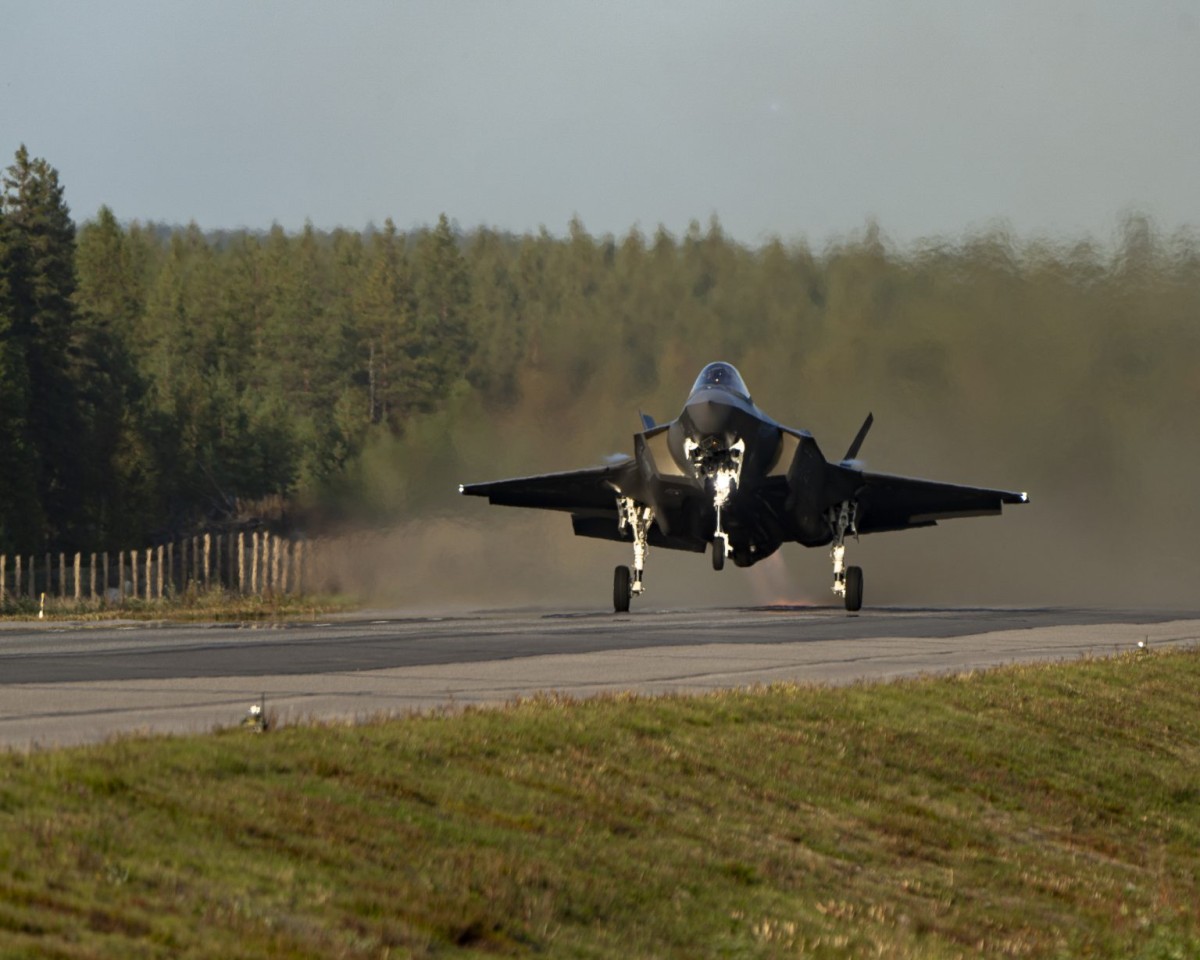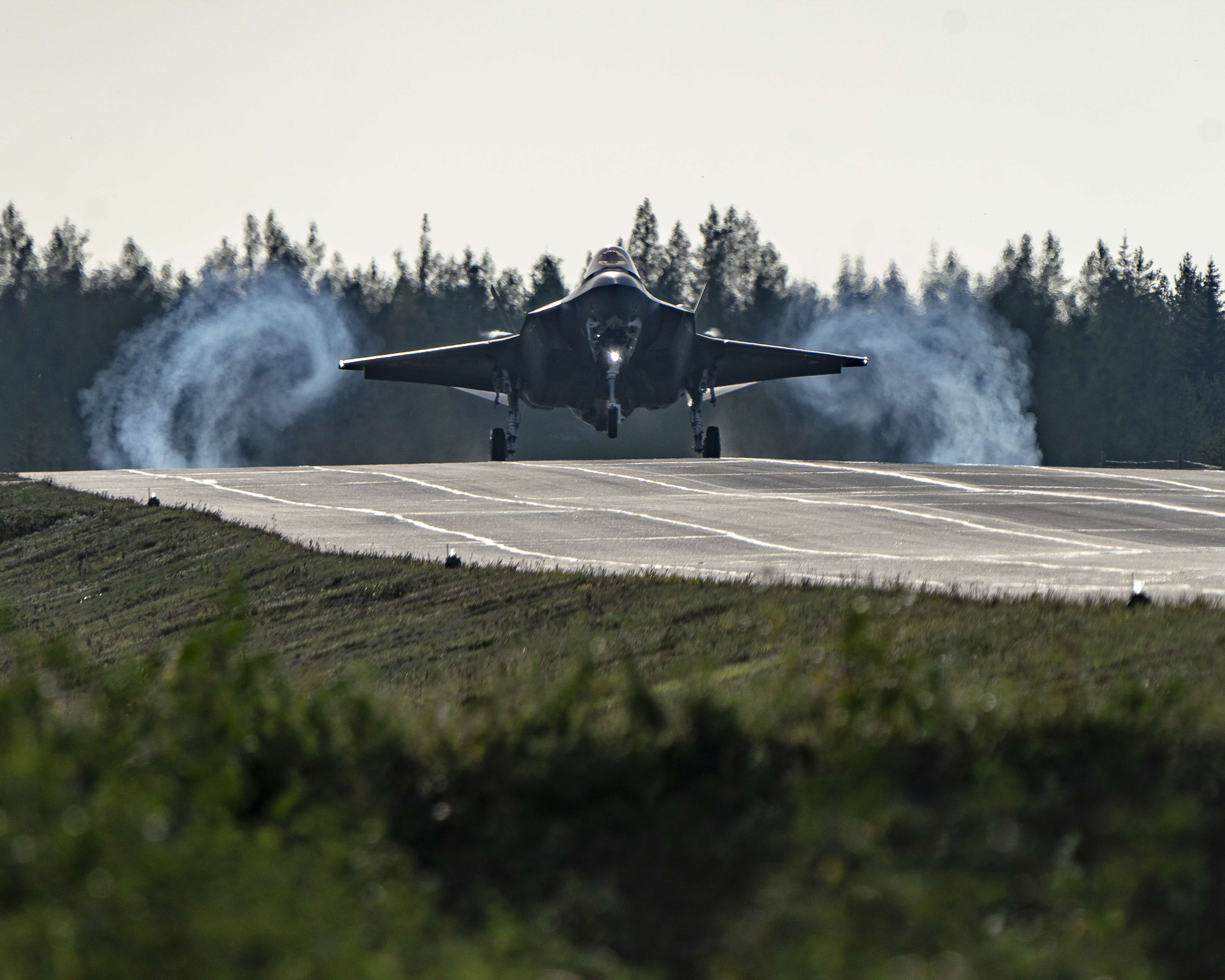In a major milestone, two F-35 Lightning II aircraft from the United States Air Force (USAF), assigned to the 48th Fighter Wing at Royal Air Force Lakenheath in the United Kingdom, successfully executed a historic landing on a highway in Finland on September 4, 2024.
This marked the first time that the fifth-generation US fighter jets have operated from a road instead of a runway in Europe. The landing was part of Finland’s annual road base exercise, BAANA 2024, organized by the Finnish Air Force.
This exercise is designed to prepare participating forces for rapid aircraft dispersal across the country in the event of a conflict, enabling operations from unconventional locations. BAANA 2024 began on August 31 and runs until September 6.
The F-35s’ participation in the exercise highlights growing cooperation between the United States and Finland, with both nations focusing on interoperability among allied forces.
Gen. James Hecker, commander of US Air Forces in Europe – Air Forces Africa, emphasized the significance of this event.
“The successful first-ever landing of our fifth generation F-35 on a highway in Europe is a testament to the growing relationship and close interoperability we have with our Finnish Allies,” he said.
Hecker added, “The opportunity to learn from our Finnish counterparts improves our ability to rapidly deploy and employ air power from unconventional locations and reflects the collective readiness and the agility of our forces.”

The landing further highlights the United States Air Force’s Agile Combat Employment (ACE) strategy, which focuses on conducting operations from widely distributed sites with limited infrastructure to counter rising global threats.
While this marks the first landing of US F-35s on a European road, it is not the first instance of highway landings involving the F-35A.
In 2023, a Norwegian F-35A operated from a Finnish highway during a BAANA exercise. Also, the US Marine Corps has operated F-35Bs, the short takeoff and vertical landing variant, from a closed US highway.
Why US Air Force Is Focusing On Dispersed Fighter Operations?
While dispersed operations were common during the Cold War, this practice waned as the perceived threat from Russia diminished.
However, with the resurgence of Russian aggression, notably its full-scale invasion of Ukraine, NATO is revisiting road-based operations. The threat of Russian belligerence also contributed to Finland and Sweden’s decisions to join the alliance.
IAF veteran Air Marshal Anil Chopra (retd) shared with EurAsian Times that traditional airbases are highly vulnerable to modern ballistic and cruise missile attacks.
Enemy forces equipped with satellites can easily locate these bases and launch a large number of missiles to strike them effectively. Substantial investment is required to fortify the infrastructure to safeguard these bases.
Air Marshal Chopra pointed out that highways, on the other hand, could serve as critical alternative sites for NATO air forces if primary bases are compromised or inaccessible. This approach is cost-effective, requiring only a “reinforced 3km stretch of highway,” which could be located in a remote area such as a jungle.
Additionally, it necessitates specialized trucks for logistical support, which can be easily dispersed once their role is complete. This minimal infrastructure and flexible logistics make it a practical and economical solution for enhancing military operations.
He further elaborated that, in contrast to traditional airbases where aircraft are confined to taking off and landing at the same location, utilizing highways offers a major tactical advantage.
A Russian Jet That Shocked The West! The Incredible Story Of MiG-15 That Decimated USAF Bomber Fleet
By operating from multiple highway sites, military aircraft gain a high degree of flexibility. They can launch and recover from various points rather than being restricted to a single base.
Such operational mobility complicates enemy targeting efforts. As a result, air forces around the world are shifting their focus towards dispersed operations.
Air Marshal Chopra noted that the Indian Air Force has also been increasingly developing its capabilities to conduct aircraft operations from highways in recent years.
The ongoing conflict has already highlighted the susceptibility of traditional air bases. Russia’s extensive deployment of ballistic missiles, cruise missiles, drones, and glide bombs has severely damaged or obliterated Ukrainian air bases.
In response, Ukraine has innovated by targeting Russian air bases beyond the front lines with its weaponized drones, given that Western-supplied long-range missiles have been restricted from bombing Russian territory.

The US military is also increasingly concerned about the vulnerability of its bases globally, particularly in the event of a high-end conflict with China in the Pacific.
To address these concerns, the US Air Force and Marine Corps are exploring ways to operate F-35s and other aircraft from roads and remote locations as part of their evolving expeditionary and distributed operational strategies.
The US Air Force is also focusing on greater integration with NATO partners, especially as many member nations transition to the F-35. Although Agile Combat Employment is often associated with the Indo-Pacific region, US forces in Europe are preparing for operations from alternative sites if their main bases are threatened.
NATO’s newest members, Sweden and Finland, are accustomed to operating from minimal infrastructure. Sweden’s Gripen fighters are designed for low logistical support, and the Swedish Air Force regularly practices highway landings. Similarly, Finland incorporates road landings into its fighter pilot training regimen.
According to the US Air Force, Finland’s joining NATO in 2023 has provided valuable opportunities for US Airmen to collaborate with Finnish counterparts. The Finnish Air Force, currently operating the F/A-18, is set to replace its aging Hornet fleet with 64 F-35s.
- Contact the author at ashishmichel(at)gmail.com
- Follow EurAsian Times on Google News




